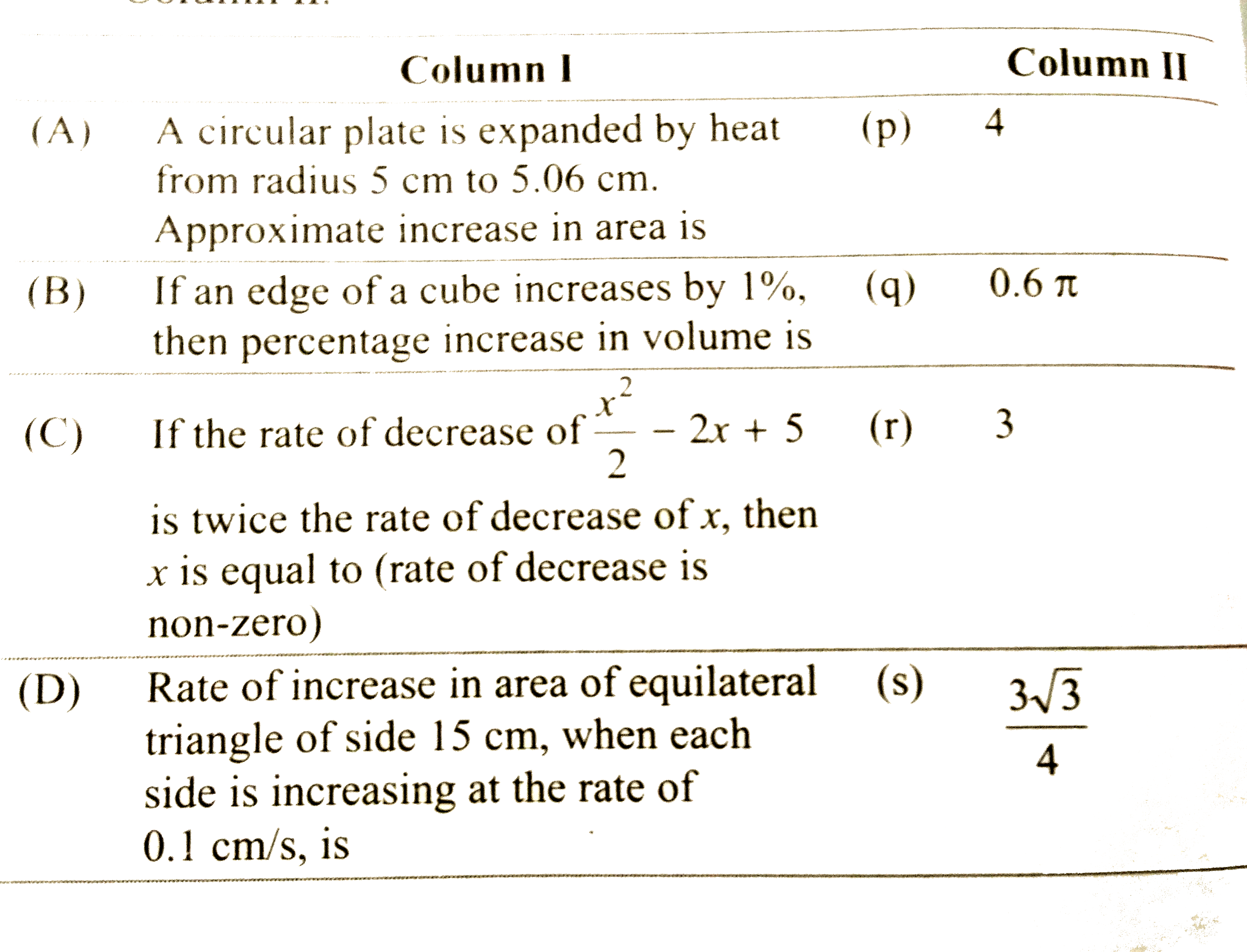If α0,α1,α2,...,αn−1 are the n, nth
roots of the unity , then find the value of n−1∑i=012−ai.Solution in Punjabi
Statement I is true, Statement II is also true, Statement II is the correct explanation of Statement I.
Statement I is true, Statement II is also true, Statement II is not the correct explanation of Statement I
Statement I is true, Statement II is false
Statement I is false, Statement II is true
The correct Answer is:A
Step by step video & image solution for If alpha_(0),alpha_(1),alpha_(2),...,alpha_(n-1) are the n, nth roots of the unity , then find the value of sum_(i=0)^(n-1)(1)/(2-a_(i)). by Maths experts to help you in doubts & scoring excellent marks in Class 12 exams.
Updated on:21/07/2023Topper's Solved these Questions
- DY / DX AS A RATE MEASURER AND TANGENTS, NORMALS BOOK - ARIHANT MATHSCHAPTER - DY / DX AS A RATE MEASURER AND TANGENTS, NORMALS EXERCISE - Exercise (Passage Based Questions)
8 Videos
- DY / DX AS A RATE MEASURER AND TANGENTS, NORMALS BOOK - ARIHANT MATHSCHAPTER - DY / DX AS A RATE MEASURER AND TANGENTS, NORMALS EXERCISE - EXERCISE : 5
1 Videos
- DY / DX AS A RATE MEASURER AND TANGENTS, NORMALS BOOK - ARIHANT MATHSCHAPTER - DY / DX AS A RATE MEASURER AND TANGENTS, NORMALS EXERCISE - Exercise (More Than One Correct Option Type Questions)
15 Videos
- DIFFERENTIATION BOOK - ARIHANT MATHSCHAPTER - DIFFERENTIATION EXERCISE - Exercise For Session 10
4 Videos
- ELLIPSEBOOK - ARIHANT MATHSCHAPTER - ELLIPSEEXERCISE - Exercise (Questions Asked In Previous 13 Years Exam)
26 Videos
Similar Questions
Find dydxify=ex−2x
View SolutionMatch the statements of Column I with values of Column II.

View SolutionFor the curve represented parametrically by the equation, x=2log(cott)+1 and y=tant+cott,tangent and normal intersect at point (2,1)
View SolutionThe functions f(x)−ex+x, being differentiable and one-one, has a differentiable inverse f−1(x) The value of ddxf−1 at the point f(log2) is
View SolutionThe minimum area of the triangle formed by the tangent to x2a2+y2b2=1 and the coordinate axes is
View SolutionIf n>=3 and 1,alpha_(1),alpha_(2),alpha_(3)...alpha_(n-1) are the n, nth roots of unity then find the value of sum_(1<=i
View SolutionIf 1,alpha_(1),alpha_(2),alpha_(3),alpha_(4) are the fifth roots of unity then sum_(i=1)^(4)(1)/(2-alpha_(i))=
View SolutionIf 1,α1,α2,………..,αn−1 are nkth roots of unity, then the value of
(1−α1)(1−α2)(1−α3)……(1−αn−1) is equal to
View SolutionIf 1,α1,α2,α3,...,αn−1 are n, nth roots of unity, then (1−α1)(1−α2)(1−α3)...(1−αn−1) equals to
View SolutionIfα1,α2,……….,αn are the roots of xn+px+q=0 , then (αn−α1)(αn−α2)………(αn−αn−1)=
View SolutionIf n≥3and1,α1,α2,.......,αn−1 are nth roots of unity then the sum ∑1≤i<j≤n−1αiα(j)=
View SolutionIf 1,α1,α2,…..αn−1 are the nth roots of unity and n is an odd natural number then
(1+α1)(1+α2)…..(1+αn−1)=
View SolutionIf α0,α1,α2−−−−αn−1 be the nth roots of unity then the value of n−1∑r=0αr3−αr is
View SolutionIf 1,α1,α2......αn−1 are nth roots of unity then 11−α1+11−α2+......+11−αn−1=
View SolutionIf 1,α1,α2,...,αn−1 are nth roots of unity then 11−α1+11−α2+....+11−αn−1=
View SolutionIf 1,α1,α2,⋅⋅⋅⋅⋅,αn−1 are the nth roots of unity, then (2−α1),(2−α2)…..(2−αn−1)=
View Solution
